#biodiversity United Nations
Explore tagged Tumblr posts
Text
Masterpost: Reasons I firmly believe we will beat climate change
Posts are in reverse chronological order (by post date, not article date), mostly taken from my "climate change" tag, which I went through all the way back to the literal beginning of my blog. Will update periodically.
Especially big deal articles/posts are in bold.
Big picture:
Mature trees offer hope in world of rising emissions (x)
Spying from space: How satellites can help identify and rein in a potent climate pollutant (x)
Good news: Tiny urban green spaces can cool cities and save lives (x)
Conservation and economic development go hand in hand, more often than expected (x)
The exponential growth of solar power will change the world (x)
Sun Machines: Solar, an energy that gets cheaper and cheaper, is going to be huge (x)
Wealthy nations finally deliver promised climate aid, as calls for more equitable funding for poor countries grow (x)
For Earth Day 2024, experts are spreading optimism – not doom. Here's why. (x)
Opinion: I’m a Climate Scientist. I’m Not Screaming Into the Void Anymore. (x)
The World’s Forests Are Doing Much Better Than We Think (x)
‘Staggering’ green growth gives hope for 1.5C, says global energy chief (x)
Beyond Catastrophe: A New Climate Reality Is Coming Into View (x)
Young Forests Capture Carbon Quicker than Previously Thought (x)
Yes, climate change can be beaten by 2050. Here's how. (x)
Soil improvements could keep planet within 1.5C heating target, research shows (x)
The global treaty to save the ozone layer has also slowed Arctic ice melt (x)
The doomers are wrong about humanity’s future — and its past (x)
Scientists Find Methane is Actually Offsetting 30% of its Own Heating Effect on Planet (x)
Are debt-for-climate swaps finally taking off? (x)
High seas treaty: historic deal to protect international waters finally reached at UN (x)
How Could Positive ‘Tipping Points’ Accelerate Climate Action? (x)
Specific examples:
Environmental Campaigners Celebrate As Labour Ends Tory Ban On New Onshore Wind Projects (x)
Private firms are driving a revolution in solar power in Africa (x)
How the small Pacific island nation of Vanuatu drastically cut plastic pollution (x)
Rewilding sites have seen 400% increase in jobs since 2008, research finds [Scotland] (x)
The American Climate Corps take flight, with most jobs based in the West (x)
Waste Heat Generated from Electronics to Warm Finnish City in Winter Thanks to Groundbreaking Thermal Energy Project (x)
Climate protection is now a human right — and lawsuits will follow [European Union] (x)
A new EU ecocide law ‘marks the end of impunity for environmental criminals’ (x)
Solar hits a renewable energy milestone not seen since WWII [United States] (x)
These are the climate grannies. They’ll do whatever it takes to protect their grandchildren. [United States and Native American Nations] (x)
Century of Tree Planting Stalls the Warming Effects in the Eastern United States, Says Study (x)
Chart: Wind and solar are closing in on fossil fuels in the EU (x)
UK use of gas and coal for electricity at lowest since 1957, figures show (x)
Countries That Generate 100% Renewable Energy Electricity (x)
Indigenous advocacy leads to largest dam removal project in US history [United States and Native American Nations] (x)
India’s clean energy transition is rapidly underway, benefiting the entire world (x)
China is set to shatter its wind and solar target five years early, new report finds (x)
‘Game changing’: spate of US lawsuits calls big oil to account for climate crisis (x)
Largest-ever data set collection shows how coral reefs can survive climate change (x)
The Biggest Climate Bill of Your Life - But What Does It DO? [United States] (x)
Good Climate News: Headline Roundup April 1st through April 15th, 2023 (x)
How agroforestry can restore degraded lands and provide income in the Amazon (x) [Brazil]
Loss of Climate-Crucial Mangrove Forests Has Slowed to Near-Negligable Amount Worldwide, Report Hails (x)
Agroecology schools help communities restore degraded land in Guatemala (x)
Climate adaptation:
Solar-powered generators pull clean drinking water 'from thin air,' aiding communities in need: 'It transforms lives' (x)
‘Sponge’ Cities Combat Urban Flooding by Letting Nature Do the Work [China] (x)
Indian Engineers Tackle Water Shortages with Star Wars Tech in Kerala (x)
A green roof or rooftop solar? You can combine them in a biosolar roof — boosting both biodiversity and power output (x)
Global death tolls from natural disasters have actually plummeted over the last century (x)
Los Angeles Just Proved How Spongy a City Can Be (x)
This city turns sewage into drinking water in 24 hours. The concept is catching on [Namibia] (x)
Plants teach their offspring how to adapt to climate change, scientists find (x)
Resurrecting Climate-Resilient Rice in India (x)
Edit 1/12/25: Yes, I know a bunch of the links disappeared. I'll try to fix that when I get the chance. In the meantime, read all the other stuff!!
Other Masterposts:
Going carbon negative and how we're going to fix global heating (x)
#climate change#climate crisis#climate action#climate emergency#climate anxiety#climate solutions#fossil fuels#pollution#carbon emissions#solar power#wind power#trees#forests#tree planting#biodiversity#natural disasters#renewables#renewable electricity#united states#china#india#indigenous nations#european union#plant biology#brazil#uk#vanuatu#scotland#england#methane
2K notes
·
View notes
Text
CALI, Colombia (AP) — After two weeks of negotiations, delegates on Saturday agreed at the United Nations conference on biodiversity to establish a subsidiary body that will include Indigenous peoples in future decisions on nature conservation, an important development that builds on a growing movement to recognize the role of Indigenous peoples in protecting land and helping combat climate change.
The delegates also agreed to oblige major corporations to share the financial benefits of research when using natural genetic resources.
Indigenous delegations erupted into cheers and tears after the historic decision to create the subsidiary body was announced. It recognizes and protects the traditional knowledge systems of Indigenous peoples and local communities for the benefit of global and national biodiversity management, said Sushil Raj, Executive Director of the Rights and Communities Global Program at the Wildlife Conservation Society.
“It strengthens representation, coordination, inclusive decision making, and creates a space for dialogue with parties to the COP,” Raj told The Associated Press, referring to the formal name of the gathering, Conference of Parties.
Negotiators had struggled to find common ground on some key issues in the final week but came to a consensus after talks went late into Friday.
The COP16 summit, hosted in Cali, Colombia, was a follow-up to the historic 2022 accord in Montreal, which included 23 measures to save Earth’s plant and animal life, including putting 30 percent of the planet and 30 percent of degraded ecosystems under protection by 2030.
A measure to recognize the importance of the role of people of African descent in the protection of nature was also adopted in Cali.
The Indigenous body will be formed by two co-chairs elected by COP: one nominated by U.N. parties of the regional group, and the other nominated by representatives of Indigenous peoples and local communities, the AP saw in the final document.
At least one of the co-chairs will be selected from a developing country, taking into account gender balance, the document said.
“With this decision, the value of the traditional knowledge of indigenous peoples, Afro-descendants and local communities is recognized, and a 26-year-old historical debt in the Convention on Biological Diversity (CBD) is settled,” Susana Muhamad, Colombia’s environment minister and COP16 president, posted on social media platform X shortly after the announcement.
29 notes
·
View notes
Text
Nairobi Observance of the International Day for Biodiversity 2024.
The United Nations has proclaimed May 22 as International Day for Biological Diversity (IDB) to increase understanding and awareness of biodiversity issues. When first created by the Second Committee of the UN General Assembly in late 1993, 29 December (the date of entry into force of the Convention of Biological Diversity), was designated. In December 2000, the UN General Assembly adopted 22 May as IDB, to commemorate the adoption of the text of the Convention on 22 May 1992 by the Nairobi Final Act of the Conference for the Adoption of the Agreed Text of the Convention on Biological Diversity. This was partly done because it was difficult for many countries to plan and carry out suitable celebrations for the date of 29 December, given the number of holidays that coincide around that time of year.
Watch the International Day for Biodiversity Celebrations!

#22 may#biodiversity#biological diversity#international day for biological diversity#convention on biological diversity#united nations biodiversity#united nations in nairobi#genetic resources#be part of the plan#part of the plan#panel discussion#unon#biodiversity crisis#biodiversity conservation#climate crisis#triple planetaey crisis
5 notes
·
View notes
Text



The End of COP 16
Well, that was exhausting: COP 16 has drawn to a close.
I only regret that my work as a member of Canada's state delegation left me too little time to support my Nature Canada colleagues, Ted Cheskey and Lillian Trapper. They represented us at civil society events with distinction.
Our negotiations ran late into the night. Physical exhaustion is an effective argument in driving diplomats to agreement.
We had victories on Indigenous representation and protection of genetic resources. We have work yet to do on the treaty's financial architecture.
I am looking forward to returning to the Ottawa Valley, and enjoying nature in its autumnal colours. I hope our work at the UN Convention on Biological Diversity means that many more generations will have that chance, too.
🌱 https://via.maharaj.org/cop16
#cop16colombia#cop16#peacewithnature#colombia#biodiversity#indigenous#ottawavalley#canada#united nations
3 notes
·
View notes
Text
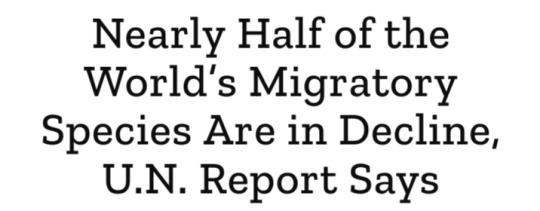

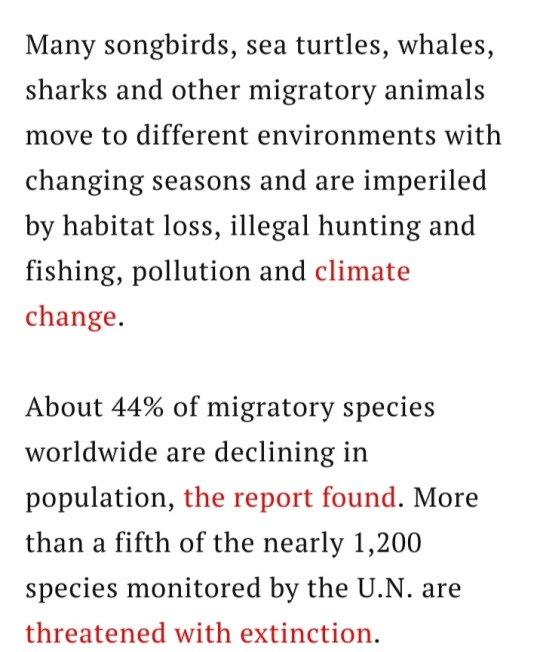
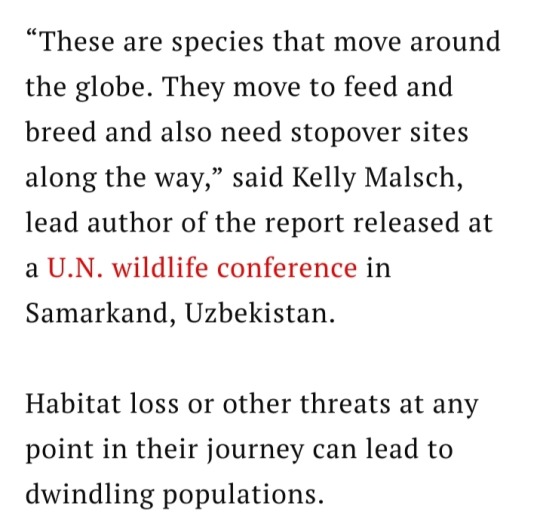
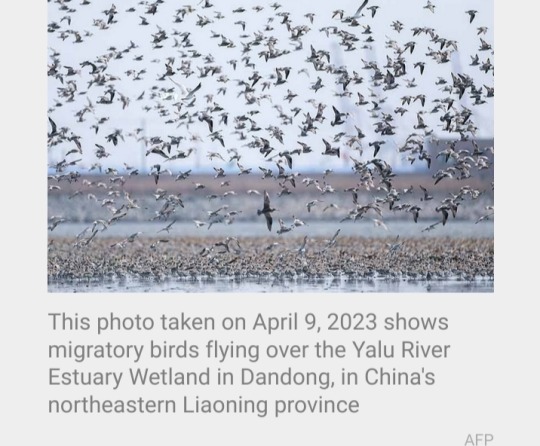

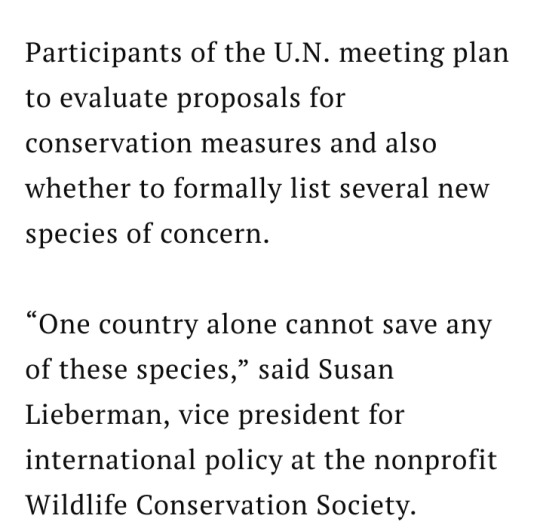

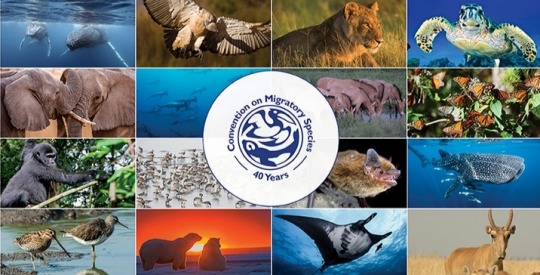

#United Nations#migratory species#wildlife conservation#climate change#habitat loss#pollution#illegal hunting#illegal fishing#International Union for Conservation of Nature's Red List#Wildlife Conservation Society#U.N. Biodiversity Conference#Amazon River#conservation#wildlife#UN Convention on the Conservation of Migratory Species of Wild Animals (CMS)
2 notes
·
View notes
Text
Unveiling the Secrets of Life Below Water: Goal 14 for a Sustainable Future
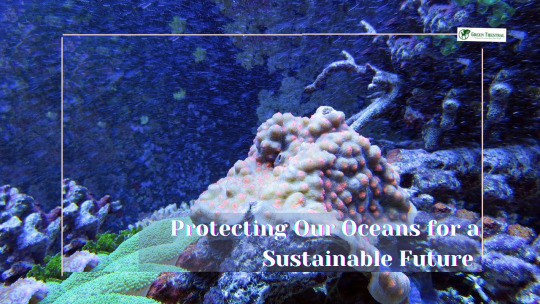
In our journey towards achieving a sustainable future, Goal 14 of the United Nations' Sustainable Development Goals (SDGs) plays a pivotal role. Life Below Water, as it is commonly referred to, focuses on the preservation and sustainable use of oceans, seas, and marine resources. With this goal, the international community aims to safeguard marine ecosystems, mitigate the impacts of human activities, and promote sustainable livelihoods for coastal communities. This article delves into the significance of Goal 14, explores the challenges faced, and highlights the initiatives that can help us ensure a healthier and more vibrant life below water.
Understanding the Importance of Goal 14
The Earth's oceans are vast and cover more than 70% of the planet's surface. They are teeming with life and harbor a remarkable diversity of species and ecosystems. From the mesmerizing coral reefs to the mysterious depths of the abyss, the oceans are a treasure trove of biodiversity, supporting millions of species, including plants, animals, and microorganisms.
Beyond their ecological significance, the oceans play a crucial role in regulating the Earth's climate. They act as a massive heat sink, absorbing a significant amount of the sun's energy and distributing it across the planet. Additionally, oceans play a vital role in the water cycle, facilitating the evaporation of water, which then falls as precipitation and sustains terrestrial ecosystems.
The oceans are not only important for the environment but also for human societies. They provide sustenance to millions of people around the world. Fishing, both for subsistence and commercial purposes, is a primary source of livelihood for coastal communities. The oceans also support economic activities such as tourism, shipping, and offshore industries, contributing significantly to global economies.
However, the delicate balance of marine ecosystems is under threat due to various human activities. Overfishing, driven by unsustainable practices and the demand for seafood, has led to the depletion of fish stocks worldwide. Large-scale industrial fishing, with destructive methods such as bottom trawling, threatens not only the targeted species but also the entire marine food web.
Marine pollution is another significant challenge faced by the oceans. Pollution from land-based sources, including plastic waste, chemicals, oil spills, and agricultural runoff, finds its way into the marine environment, causing severe harm to marine life and ecosystems. The accumulation of plastic debris in the oceans has reached alarming levels, forming giant garbage patches and causing entanglement and ingestion by marine organisms.
Habitat destruction and degradation are also taking a toll on marine ecosystems. Destructive practices such as coral reef destruction, coastal development, and the destruction of mangroves and seagrass beds result in the loss of critical habitats and the disruption of delicate ecological relationships. These habitats serve as nurseries and breeding grounds for many species, and their loss has far-reaching consequences for marine biodiversity.
Furthermore, climate change poses one of the most significant threats to life below water. Rising sea temperatures, ocean acidification, and sea-level rise are already impacting marine ecosystems. Corals, which are vital for the survival of countless marine species, are particularly vulnerable to rising temperatures and increased ocean acidity, leading to coral bleaching events and the degradation of coral reefs.
In recognition of the urgent need to protect and sustainably manage marine resources, Goal 14 of the United Nations' Sustainable Development Goals (SDGs) was established. Also known as Life Below Water, this goal aims to ensure the conservation and sustainable use of the oceans, seas, and marine resources for present and future generations.
Goal 14 encompasses various targets and indicators to guide efforts towards sustainable ocean management. One of the key focuses is the protection and restoration of coral reefs, which are among the most diverse and valuable ecosystems on Earth. Coral reefs provide habitat for numerous species, protect coastlines from erosion, and support vibrant tourism industries. By implementing measures to reduce coral bleaching, enhance reef resilience, and combat destructive practices, Goal 14 seeks to safeguard these vital ecosystems.
Another critical aspect of Goal 14 is the reduction of marine pollution. It calls for the prevention and significant reduction of marine debris, particularly plastic waste. Efforts are being made to promote better waste management systems, recycling and reusing plastics, and raising awareness about the detrimental effects of single-use plastics. Innovative technologies for ocean cleanup are also being developed to tackle existing pollution.
To address the issue of overfishing, Goal 14 emphasizes the need to restore fish stocks to sustainable levels. This involves implementing science-based management plans, combating illegal, unreported, and unregulated fishing, and promoting responsible fishing practices. Creating marine protected areas and adopting ecosystem-based management approaches can help protect critical habitats and ensure the long-term viability of fisheries.
Furthermore, Goal 14 acknowledges the urgent need to address ocean acidification, which poses a grave risk to marine organisms. By reducing carbon dioxide emissions and taking steps to enhance the resilience of marine ecosystems, such as protecting mangroves and seagrass beds, this goal aims to mitigate the impacts of ocean acidification and ensure the survival of vulnerable species.
Achieving Goal 14 requires a collaborative effort from governments, businesses, civil society organizations, and individuals worldwide. International cooperation is crucial to strengthen governance frameworks, regulate resource exploitation, combat illegal fishing, and promote sustainable practices. By taking collective action and embracing sustainable approaches, we can secure a healthier and more vibrant future for life below water.
Challenges and Threats to Life Below Water
The life below water faces a multitude of challenges that require immediate attention and concerted efforts. Overfishing, driven by unsustainable practices and illegal, unreported, and unregulated fishing, has led to a decline in fish stocks worldwide. The loss of biodiversity affects not only marine ecosystems but also the communities that depend on them for food security and economic opportunities.
Marine pollution poses another significant threat. Plastic waste, chemicals, oil spills, and other pollutants contaminate the oceans, harming marine life and ecosystems. The accumulation of plastic debris, in particular, has gained global attention due to its devastating impact on marine organisms and the potential consequences for human health through the food chain.
Ocean acidification, caused by the absorption of excess carbon dioxide from the atmosphere, poses a grave risk to marine organisms such as corals, shellfish, and plankton. Acidic waters can hinder the growth and survival of these organisms, disrupting the entire marine food web and impacting the livelihoods of coastal communities.
Initiatives and Solutions for a Sustainable Life Below Water
Achieving Goal 14 requires a comprehensive approach involving governments, businesses, civil society, and individuals. Several initiatives and solutions have emerged to address the challenges faced by life below water:
Sustainable Fisheries Management: Implementing science-based management plans, promoting responsible fishing practices, and combating illegal fishing are crucial steps towards replenishing fish stocks and ensuring the long-term sustainability of fisheries. Tools like marine protected areas and ecosystem-based management help preserve critical habitats and protect biodiversity.
Marine Pollution Prevention: Reducing plastic pollution and other sources of marine debris is vital. This can be achieved through improved waste management systems, recycling and reusing plastics, and raising awareness about the consequences of single-use plastics. Additionally, promoting the use of biodegradable alternatives and supporting innovative technologies for ocean cleanup can help mitigate the impact of existing pollution.
Climate Change Mitigation and Adaptation: Addressing climate change is fundamental to preserving life below water. Transitioning to renewable energy sources, reducing greenhouse gas emissions, and promoting sustainable coastal development are essential steps in mitigating the impacts of climate change on marine ecosystems. Additionally, enhancing the resilience of coastal communities through measures such as mangrove restoration, coastal protection, and sustainable tourism can aid adaptation efforts.
International Cooperation and Governance: Collaboration among nations is crucial for the effective implementation of Goal 14. Strengthening international frameworks, such as the United Nations Convention on the Law of the Sea (UNCLOS), and promoting regional cooperation can help combat illegal fishing, regulate resource exploitation, and ensure the sustainable use of marine resources.
Conclusion
Preserving life below water is not only crucial for the health of our oceans but also for the overall well-being of our planet. Goal 14 provides a roadmap for sustainable ocean management, aiming to conserve marine biodiversity, mitigate pollution, and promote the sustainable use of marine resources. By taking action at individual, local, and global levels, we can make a significant difference in ensuring a healthier and more vibrant future for life below water. Let us join hands and work together to safeguard the oceans for generations to come.
#Sustainable management of marine resources#Conserving marine biodiversity#Protecting coral reefs and marine ecosystems#Sustainable fishing practices for life below water#Reducing marine pollution for a healthier ocean#Restoring fish stocks for sustainable fisheries#Addressing the threats of overfishing#Combating illegal fishing activities#Preserving the delicate balance of marine ecosystems#Tackling plastic pollution in the oceans#Solutions for ocean acidification#Climate change impact on life below water#Sustainable tourism and the oceans#Promoting responsible coastal development#Achieving United Nations' Goal 14 for a sustainable future#Enhancing resilience of coastal communities#Sustainable livelihoods for coastal populations#Importance of ocean conservation and sustainability#Preserving marine habitats and species diversity#Ecosystem-based management for marine resources#Strengthening international cooperation for Goal 14#Achieving sustainable development through Goal 14#Role of marine protected areas in conservation#Long-term viability of marine ecosystems#Promoting sustainable shipping practices#Economic benefits of sustainable ocean management#Balancing human activities with marine conservation#The significance of Goal 14 in the SDGs#Ensuring a vibrant future for life below water#Global initiatives for the protection of marine environments
2 notes
·
View notes
Photo
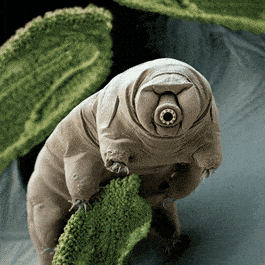
Don't be a Butthole! Practice Safe Sex!
#giphy#united nations#sdg#soil#biodiversity#fao#gsp#sustainable development goals#food and agriculture organization#egyptiancat204#soils#faosoils#global soil partnership#gsobi#healthy soils#soil biodiversity
3 notes
·
View notes
Text
Unified Treaty for High Seas
UN Drafts Environmental Protection Treaty for High Seas
A unified treaty to protect open ocean biodiversity has been signed by the nations of the UN, for the first time. In 1944, the U.N. Convention on the Law of the Sea was enacted, protecting international rights at sea and putting into place a few environmental laws, mostly about dumping waste. It has only been occasionally updated since. But for the past twenty years, a new framework to protect…

View On WordPress
#high seas#marine conservation#oceans#rebecca helm#U.N. Biodiversity Conference#U.N. convention on the law of the sea#United Nations
5 notes
·
View notes
Text
[…] “Some groups appeared to have close state-industry relations, with more than a dozen business representatives registered with country delegations, rather than separate business delegations.”
0 notes
Text
Principle 4 - Ecosystem restoration aims to achieve the highest level of recovery for biodiversity, ecosystem health and integrity and human well-being.

Ecosystem restoration aims to achieve and sustain the greatest net gain possible, given project- and programme-level goals, for biodiversity, ecosystem health and integrity, ecosystem goods and services, climate-change mitigation, and human health and well-being at local, national and global scales. It should enhance and not be a substitute for nature conservation, especially in areas with high ecological integrity and high value for ensuring ecological connectivity, as well as in other priority areas for conservation, including those within the territories of Indigenous peoples and traditional communities. Management practices intended to be restorative should support and assist natural recovery processes and not cause further degradation. The use of genetically appropriate germplasm of native species should be favoured, whereas non-native species potentially or already proven to be invasive should be avoided.

#Benefits to people and nature#ecosystem health and integrity#biodiversity protection#biomes#biodiversity loss#decade on ecosystem restoration#ecology#ecological and hydrological connectivity#ecological restoration#climate change mitigation#sdg12#sdg15#sdg13#decade on ecosystem restoratio#restorative activities#ecosystem restoration#non-native species#native species#conservation efforts#effective practices#sustainable practices#iucn#food and organization organization#united nations environment programme#land degradation neutrality#degraded terrestrial ecosystem#degraded marine ecosystem
0 notes
Text
"For over a decade, the Yosemite toad has been recognized as a federally threatened species, after experiencing a 50% population decline during the Rim Fire of 2013.
The wildfire, which encompassed a mass of land near Yosemite National Park, made the amphibian species especially vulnerable in its home habitat.
Native to the Sierra Nevada, the toads play a key role in the area’s ecosystem — and conservationists stepped in to secure their future.
In 2017, the San Francisco Zoo’s conservation team began working with the National Park Service, Yosemite Conservancy, U.S. Fish & Wildlife Service, California Department of Fish & Wildlife, and the U.S. Geological Survey.
The goal of all of these stakeholders? To raise their own Yosemite toads, re-establishing a self-sustaining population in the wild.
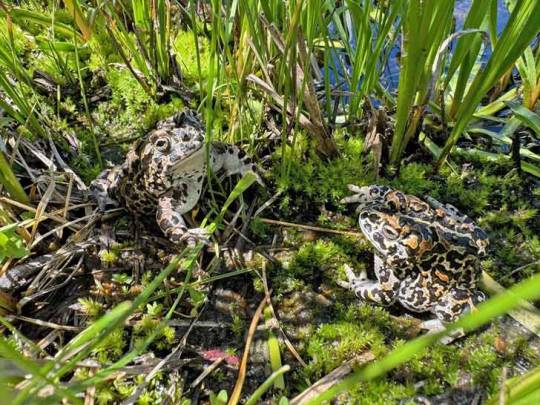
“Over the past several years, SF Zoo’s conservation team has been busily raising hundreds of these small but significant amphibians from tadpole stage, a species found only in the Sierra Nevada, for the purpose of reintroducing them to an area of Yosemite National Park where it was last seen 11 years ago,” the zoo shared on social media.
By 2022, a group of toads were deemed ready for release — and at the end of June of this year [2024], 118 toads were flown via helicopter back to their habitat.
“It’s the first time anyone has ever raised this species in captivity and released them to the wild,” Rochelle Stiles, field conservation manager at the San Francisco Zoo, told SFGATE. “It’s just incredible. It makes what we do at the zoo every day worthwhile.”
Over the past two years, these toads were fed a diet of crickets and vitamin supplements and were examined individually to ensure they were ready for wildlife release.
Zoo team members inserted a microchip into each toad to identify and monitor its health. In addition, 30 of the toads were equipped with radio transmitters, allowing their movements to be tracked using a radio receiver and antenna.
The project doesn’t end with this single wildlife release; it’s slated to take place over the next five years, as conservationists continue to collect data about the toads’ breeding conditions and survivability in an ever-changing climate. They will also continue to raise future toad groups at the zoo’s wellness and conservation center...
While the future of the Yosemite toad is still up in the air — and the uncertainty of climate change makes this a particularly audacious leap of faith — the reintroduction of these amphibians could have positive ripple effects for all of Yosemite.
Their re-entry could restore the population balance of invertebrates and small vertebrates that the toads consume, as well as balance the food web, serving as prey for snakes, birds, and other local predators.
“Zoo-reared toads can restore historic populations,” Nancy Chan, director of communications at the San Francisco Zoo, told SFGATE.
Stiles continued: “This is our backyard, our home, and we want to bring native species back to where they belong.”
-via GoodGoodGood, July 11, 2024
#yosemite#yosemite national park#california#united states#amphibian#frogs and toads#frogblr#frogposting#toadblr#toad#endangered species#wild animals#biodiversity#wildlife conservation#wildlife#good news#hope
1K notes
·
View notes
Text
May 10th as International Day of Argania.

This unique region, where argan trees have been cultivated for centuries combines agricultural biodiversity, resilient ecosystems and valuable cultural heritage. For that reason, it has gotten recognition and protection from various UN entities.
The United Nations Educational Scientific and Cultural Organization (UNESCO) designated in 1988 the endemic production area as the Arganeraie Biosphere Reserve. Also, all know-how concerning the argan tree was inscribed in 2014 on the UNESCO Representative List of the Intangible Cultural Heritage of Humanity.
Moreover, in December 2018, FAO recognized the Argan-based agro-sylvo-pastoral system within the area of Ait Souab - Ait Mansour in Morocco as a Globally Important Agricultural Heritage System.
And lastly, in 2021, the United Nations General Assembly proclaimed 10 May the International Day of Argania. The resolution, submitted by Morocco, was co-sponsored by 113 member states of the United Nations and adopted by consensus.
#Arganeraie Biosphere Reserve#10 may#ARGANIA#International day of Argania#united nations general assemly#agro-sylvo-pastoral system#Argan-based#agricultural biodiversity#resilient ecosystems#sustainable cultivation practices#cultivating#United Nations Educational Scientific and Cultural Organization (UNESCO)#argan forest#argan ecosystem#argania tree#argan species#argan tree
0 notes
Text
SBI-5: Plenary 6 at COP16 – United Nations Biodiversity Conference 2024.
Fifth meeting of the Subsidiary Body on Implementation: 6th Plenary (Agenda Item 2 (continued). Adoption of the recommendations; Item 3. Other matters. ; Item 4. Adoption of the report. Item 5. Closure of the meeting).
Watch the SBI-5: Plenary 6 at COP16 – United Nations Biodiversity Conference 2024!

#biodiversity#biological diversity#sib5#cop16#subsidiaby body#united nations biodiversity#conferences#convention on biological diversity#plenary meetings
0 notes
Text
Self-determination and indigenous autonomies - Indigenous solutions to the climate crisis/biocrisis in the Amazon (UNPFII Side Event).
Objectives:
Present the advances in the promotion and consolidation of indigenous autonomies in the Amazon basin as a commitment to maintaining life on the planet.
Share self-determination initiatives in indigenous territorial management and the protection of forests and biodiversity.
Disseminate experiences on indigenous territorial corridors, both for the protection of peoples in isolation and initial contact, and for biodiversity.
Related Sites and Documents
Concept Note Watch the Self-determination and indigenous autonomies - Indigenous solutions to the climate crisis/biocrisis in the Amazon (UNPFII Side Event).

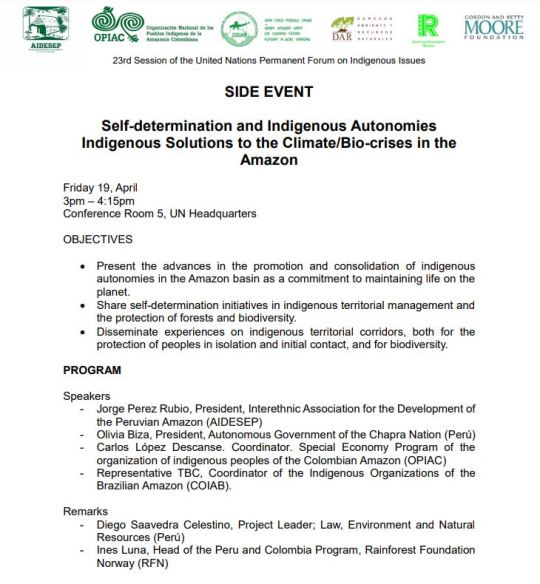
#indigenous autonomies#tribal groups#right to self determination#permanent forum on indigenous issues#unfpii23#side-events#conference room 5#united nations headquarters#forests and biodiversity#indigenous territorial corridors#amazonian#Disseminate experiences#peoples in isolation#aboriginal#initial contact#indigenous territorial management
0 notes
Text
#30x30#60x40#anthropocene#biodiversity#candice gaukel andrews#earth day#earth day 2024#environment#half earth#microplastics#natural habitat adventures#nathab#nature#nature lovers#nylon#placenta#plastic alternatives#plastics#plastic pollution#polyester#polymers#science#science and environment#scientific research#single-use plastics#wildlife#world wildlife fund#united nations global plastics treaty#wwf
0 notes